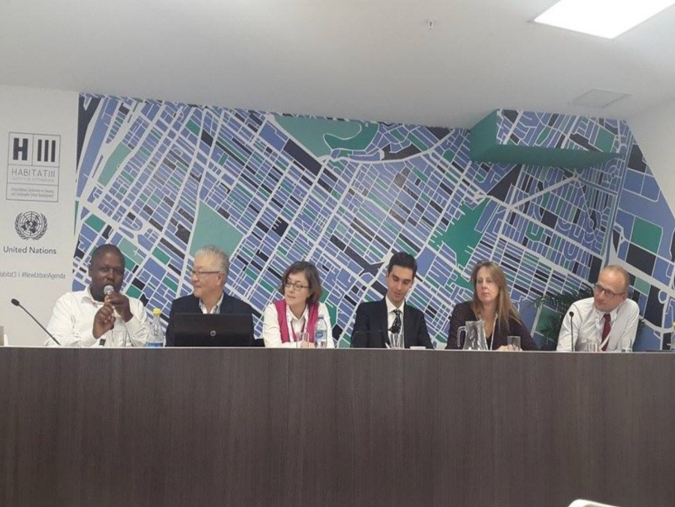Country: Ecuador
This side event at the UN-Habitat III Conference in Quito, Ecuador introduced Building Information Modelling (BIM) and mobile/cloud-based technologies as innovative tools for enhancing community engagement and capacity building in sustainable housing and informal settlement upgrading. The session addressed the shortcomings of traditional participatory methods, which often excluded broader community involvement, were dominated by specific interest groups, and limited genuine co-production and bottom-up decision-making. It also explored technical constraints related to collaborative tools and information sharing, which had previously restricted wider community participation in housing projects.
Participants examined how:
- BIM facilitated participatory design, enabling residents to directly contribute to projects by integrating their input with existing housing data for optimized solutions.
- Cloud-based and mobile BIM applications expanded engagement, allowing even low-income communities to actively participate in the decision-making process.
- BIM tools supported the collection, analysis, and modeling of housing performance data, improving planning, execution, and long-term sustainability.
- Stakeholders virtually assessed design options, ensuring that residents, CBOs, and NGOs played an informed role in decision-making.
- Emerging BIM and mobile technologies were leveraged throughout the entire lifecycle of sustainable housing delivery, from planning and design to implementation and long-term management.
By integrating BIM with mobile/cloud platforms, the session showcased how these technologies had the potential to empower local communities, improve transparency, and foster more effective housing solutions. Participants critically reflected on how BIM-driven approaches could contribute to transforming informal settlements into sustainable, resilient, and inclusive urban environments, reinforcing the key themes of UN-Habitat III on sustainable urban development.
Date: 17-20 October 2016
Client: UN-Habitat, Quito, Ecuador

